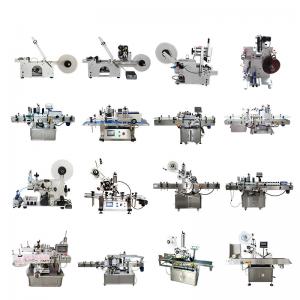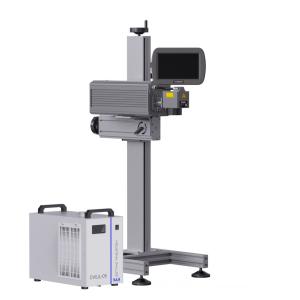A Practical Guide to Choosing the Right Filling Machine for Your Needs
A Practical Guide to Choosing the Right Filling Machine for Your Needs
Selecting the perfect filling machine for your production line is a critical decision that impacts your efficiency, product quality, and bottom line. With a myriad of options available, the process can seem overwhelming. However, by systematically evaluating your specific requirements, you can make an informed choice. This guide will walk you through the key steps to find the ideal filling machine for your application.
Step 1: Analyze Your Product's Physical Properties
The single most important factor in choosing a filling machine is the product you need to dispense. Its viscosity—whether it's a thin liquid or a thick paste—will directly determine the type of pump technology you need.
A. For Low-Viscosity Liquids (Water-like, Milk, Oils, Solvents)
Thin liquids flow easily and can be handled by a variety of pumps. Common and effective choices include:
-
Diaphragm Pumps: Excellent for chemical compatibility and handling sterile applications. They are precise and prevent the product from contacting internal moving parts.
-
Peristaltic Pumps: Ideal for sterile or abrasive fluids, as the product only contacts the tubing. They are easy to clean and maintain.
-
Magnetic Drive Pumps: Offer leak-proof performance, making them suitable for hazardous or expensive liquids.
-
Piston Pumps: Deliver high accuracy for both thin and thick products by displacing a fixed volume of liquid.
B. For High-Viscosity Liquids & Pastes (Syrups, Lotions, Creams, Gels, Food Pastes)
Thicker products require pumps that can push the material without clogging or straining. Suitable options are:
-
Gear Pumps: Provide a smooth, non-pulsating flow, excellent for products like adhesives and lubricants.
-
Rotary Lobe Pumps: Gentle on the product, making them perfect for food, pharmaceutical, and cosmetic products containing delicate particulates.
-
Piston Pumps: As mentioned, are also highly effective for thick, viscous materials due to their powerful displacement action.
-
Positive Displacement Pumps: A broader category that includes piston, gear, and lobe pumps, all designed to move a fixed amount of product per cycle.
Step 2: Determine Your Required Fill Volume and Speed
Once you have identified the appropriate pump type, the next step is to quantify your needs.
-
Fill Volume: Precisely determine how much you want to dispense per container, whether in milliliters (ml), grams (g), or ounces. This is crucial for selecting the pump's chamber size (e.g., the cylinder size in a piston pump) to ensure accuracy.
-
Production Speed: Calculate how many containers you need to fill per minute or hour. This will influence whether you need a simple semi-automatic benchtop filler for low-volume production or a fully integrated fully-automatic rotary filling system for high-speed lines.
Step 3: Consider Additional Product-Handling Requirements
Beyond basic viscosity, other product characteristics can necessitate special machine features.
-
Heating: Does your product need to be kept warm to maintain its flow? For example, chocolate, waxes, or certain gels require heated hoppers, valves, and lines to prevent solidification during the filling process.
-
Agitation: Is your product a suspension or an emulsion that separates over time? Lotions, sauces with particulates, or paints often require a tank with a mechanical stirrer or mixer to ensure consistency and homogeneity in every fill.
-
Particulates: Does your product contain solid pieces, like fruit chunks in jam or herbs in sauces? This is a critical detail. You must choose a pump and valve system designed to pass these particles without crushing them or causing blockages. Piston pumps with special valves or large-lobe rotary pumps are often the solution.
Step 4: Don't Overlook These Critical Factors
To make a truly comprehensive decision, also consider:
-
Container Type: The shape and size of your bottles, jars, or pouches matter. The machine must be adaptable with change parts to handle different container necks and heights.
-
Hygiene and Cleanability: Industries like food, beverage, and pharmaceuticals demand strict hygiene. Machines constructed with Stainless Steel (e.g., 304 or 316L) and featuring a Clean-in-Place (CIP) system are often mandatory.
-
Accuracy: What is your acceptable fill tolerance? Piston fillers are typically the most accurate, especially for viscous products, while gravity fillers can be sufficient for low-cost, non-critical applications.
-
Budget and Future-Proofing: Consider not only the initial purchase price but also the cost of operation, maintenance, and spare parts. If you plan to expand your product line, consider a modular machine that can be easily upgraded.
Conclusion
Choosing the right filling machine is a process of matching technology to your product and production goals. By starting with a thorough analysis of your product's viscosity and special needs, then moving on to volume, speed, and hygiene requirements, you can narrow down the options effectively. Remember to consult with a reputable filling machine manufacturer who can provide a demonstration using your actual product. This hands-on testing is the best way to ensure the machine you select will be a perfect, long-term partner for your business.


